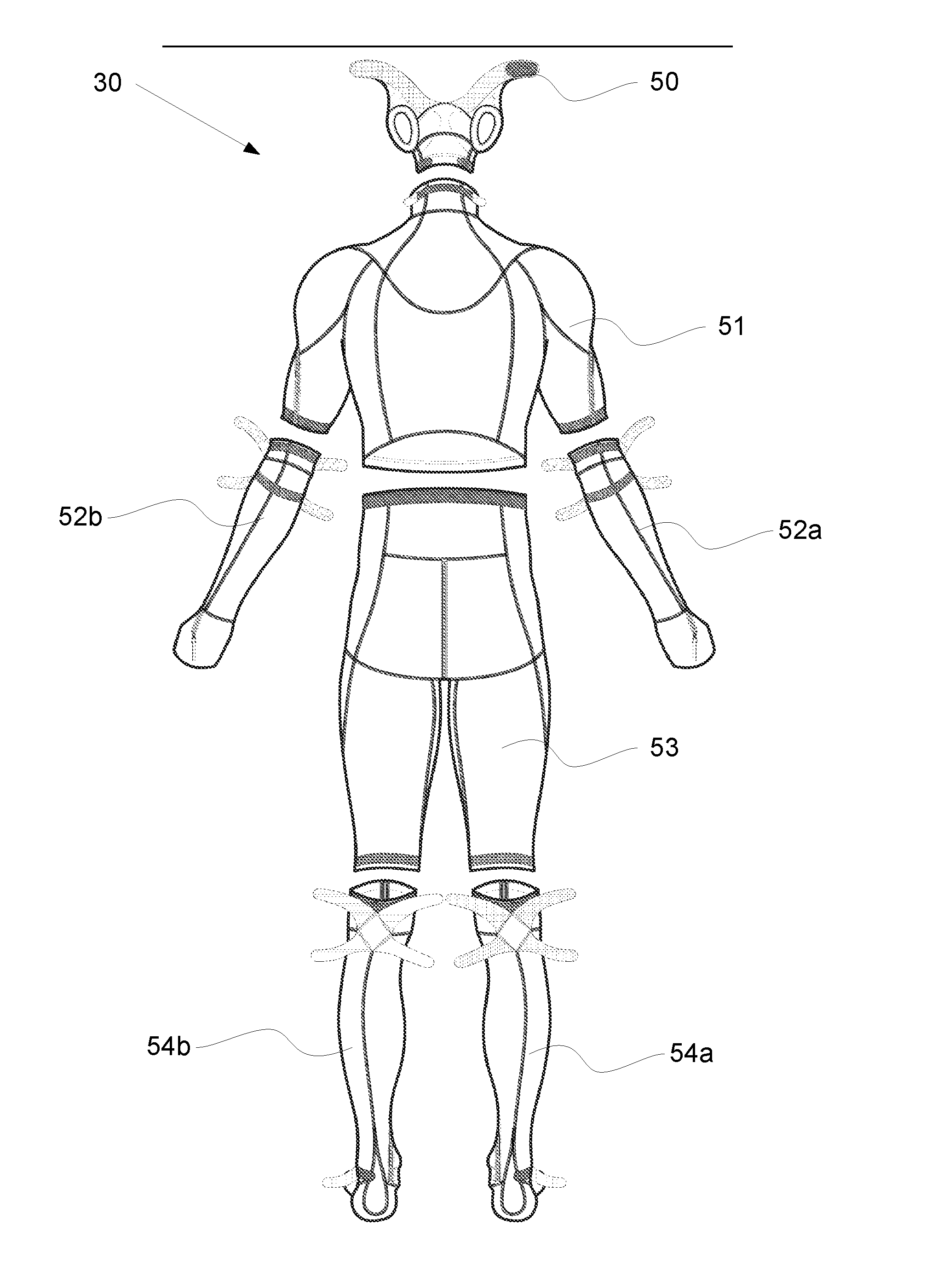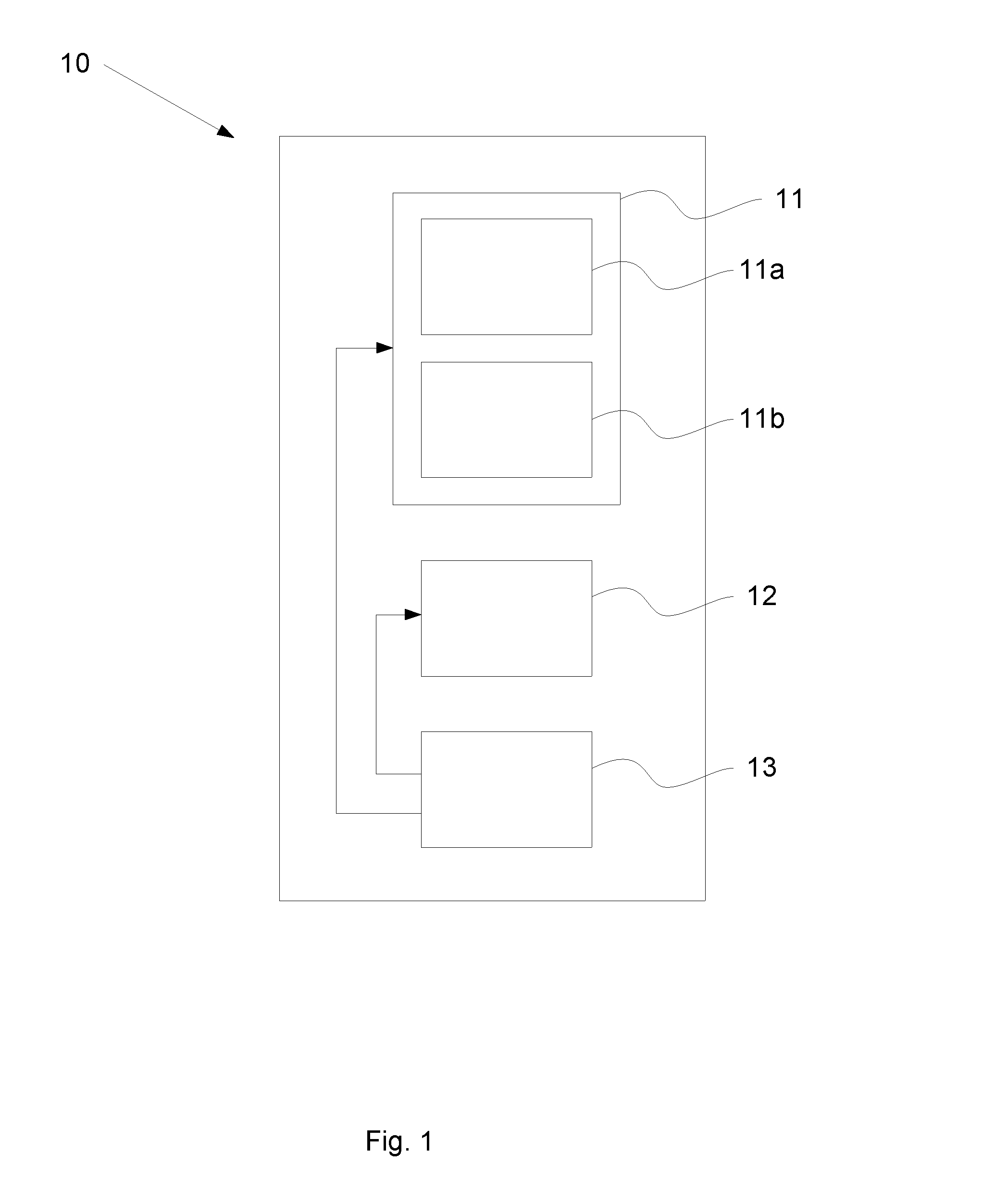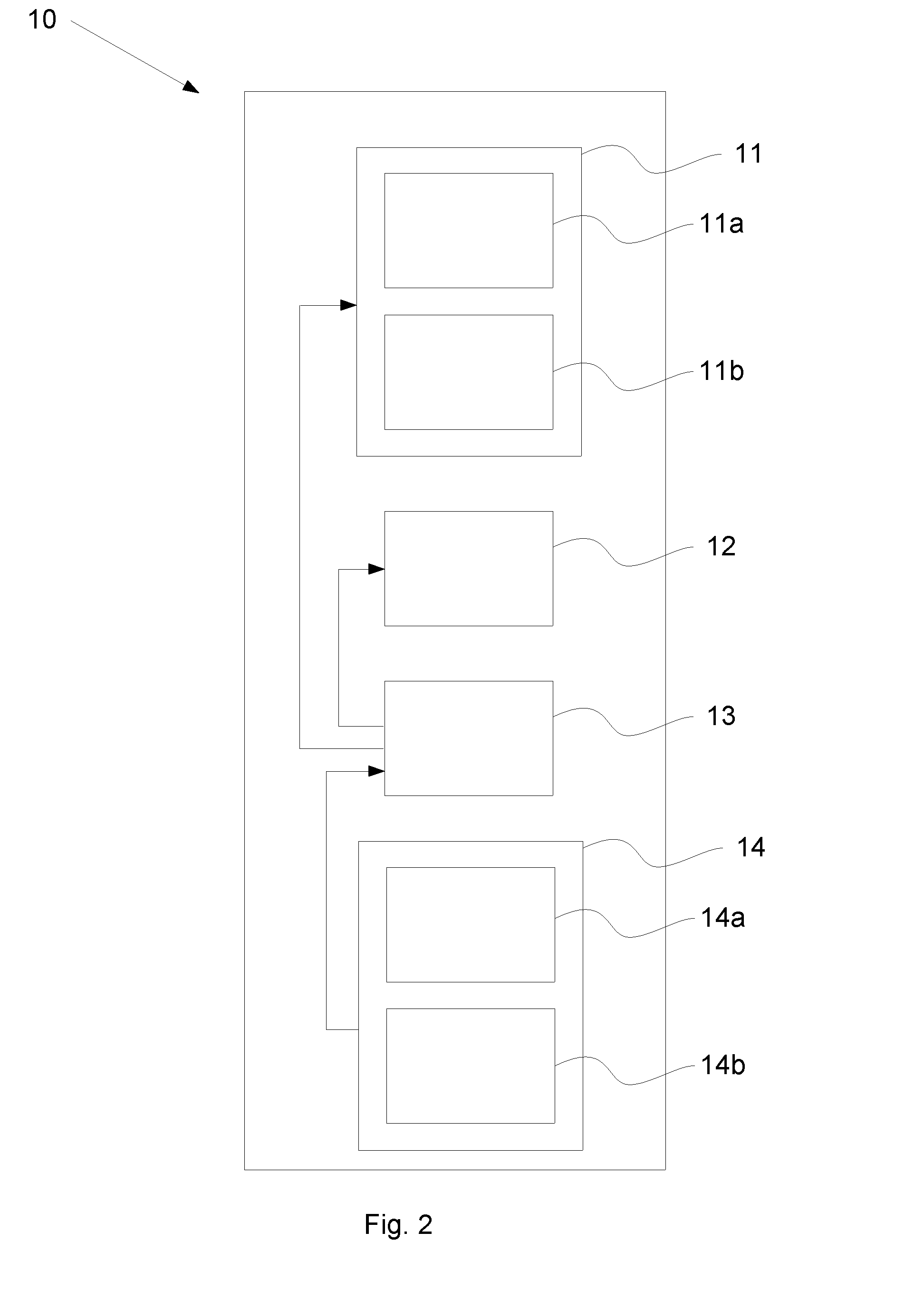System And Garment For Muscle Relaxation Of A Spastic Muscle
a spastic muscle and muscle relaxation technology, applied in the field of muscle relaxation, can solve the problems of difficult treatment and cure of cns injury symptoms, limited therapeutic alternatives for reversing cns injury symptoms, spasticity, etc., and achieve the effect of improving muscle relaxation
- Summary
- Abstract
- Description
- Claims
- Application Information
AI Technical Summary
Benefits of technology
Problems solved by technology
Method used
Image
Examples
example 1
[0126]This example demonstrates the use of the present invention in the treatment of severe spasticity. The patient was a 30-year-old male suffering from severe spasticity due to mitochondrial nerve disease, progressive since the age of 15. The patient was spastic in all limbs and the right side of the body was more spastic than the left side. Some voluntary movement in left arm and neck could be observed. The right arm was not extendable in full range of motion due to the development of contractures. A typical spastic pattern for upper motor lesions was observed. The torso and head were flexed and laterally flexed to the left. The neurogenic scoliosis of the spine was c-shaped right convex. Spasticity in the spinal musculature was primarily on the left side. The shoulders were internally rotated and adducted, the elbows were flexed and the hands were flexed and the fingers formed a first. The legs were adducted in the hip, extended in the hip and knee and the foot was plantarily fl...
example 2
[0184]This example demonstrates the use of the present invention in the treatment of severe spasticity after a cerebrovascular incident. The patient was a 58-year-old male suffering from severe spasticity after a stroke in left medial cerebral artery. The patient had long history of heart disease, and was spastic in the limbs in the right side of the body, showing classic signs of right-sided hemiplegia. No voluntary movement in the right arm and right leg were noted. A typical unilateral spastic pattern for upper motor lesions directly after a unilateral cerebrovascular incident was observed. Spasticity in the spinal musculature was primarily found on the right side. The right shoulder was internally rotated and adducted. The right elbow and right the hand were flexed and the fingers were straight or slightly flexed. The right legs were adducted in the hip, extended in the hip and knee, and finally, the foot was plantarily flexed. The patient was able to walk with a severe limb and...
example 3
[0235]This example demonstrates the use of the present invention in the treatment of severe spasticity. The patient was a 30-year-old male suffering from severe tetraplegic spasticity due to cerebral palsy. The patient was spastic in all limbs and the right limbs were slightly more spastic than the limbs of the left side. Voluntary movement resulted in generalised increase of spasticity. A typical spastic pattern for cerebral palsy was observed. The head was extended and rotated to the right, the torso was flexed. The neurogenic scoliosis of the spine was slightly c-shaped left convex. Spasticity in the spinal musculature was primarily found on the right side. The shoulders were externally rotated and adducted, the elbows were flexed and the hands were flexed. The fingers formed a first or were held straight. The legs were adducted in the hip, flexed in the hip and knee and the foot was plantarily flexed.
[0236]The following muscles were chosen for stimulation to induce muscle relaxa...
PUM
 Login to View More
Login to View More Abstract
Description
Claims
Application Information
 Login to View More
Login to View More - R&D
- Intellectual Property
- Life Sciences
- Materials
- Tech Scout
- Unparalleled Data Quality
- Higher Quality Content
- 60% Fewer Hallucinations
Browse by: Latest US Patents, China's latest patents, Technical Efficacy Thesaurus, Application Domain, Technology Topic, Popular Technical Reports.
© 2025 PatSnap. All rights reserved.Legal|Privacy policy|Modern Slavery Act Transparency Statement|Sitemap|About US| Contact US: help@patsnap.com



